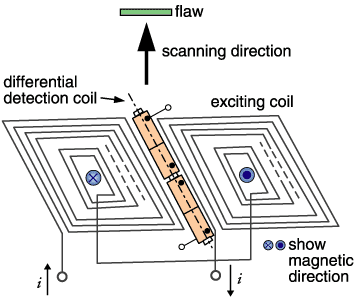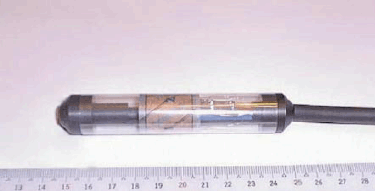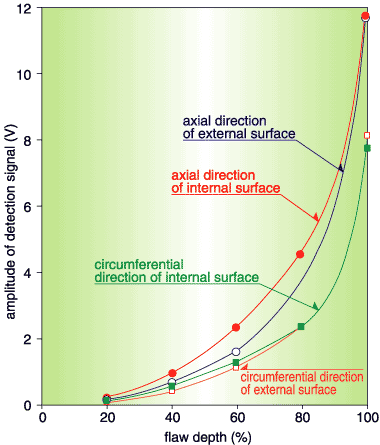In the steam generator of nuclear plants, there are a large number of heat transfer tubes. Small flaws occur by corrosion and vibration, in the internal and the external surface of the tubes, during long term operation. It is important to inspect them and detect flaws at an early stage, from the viewpoint of ensuring safety. In the conventional eddy current inspection, the so-called bobbin coil type probes are widely used. These have, however, a poor detection sensitivity to circumferential flaws since flows of eddy currents are limited only to the circumferential direction in the tube. In order to address this problem, a development of a new type eddy current probe was carried out.
The basic principle of flaw detection is the eddy current method, which detects electromagnetically induced eddy currents disturbed by flaws. The basic configuration of the flaw detection probe is a combination of parallelogram planar coils as exciting coils and differential detection coils whose core is made of permalloy with high magnetic permeability (Fig. 11-7). These were arranged cylindrically, and the flaw detection probe was developed so that it could be inserted into the tubes (Fig. 11-8). The features of this probe are that the configuration of the coils is oblique to the scanning direction and that the detection coils consist of differential ones. This means that detection of both the axial and circumferential flaws is possible.
Using this, good detection sensitivity for both the axial and circumferential flaws was obtained as a result of basic characteristic tests using various artificial flaws (Fig. 11-9). In the near future, the feasibility of the probe will be tested and evaluated under conditions near to that of an actual plant. Further development of the probe will be carried out, and an improvement of this non-destructive experimental technique is expected. |


